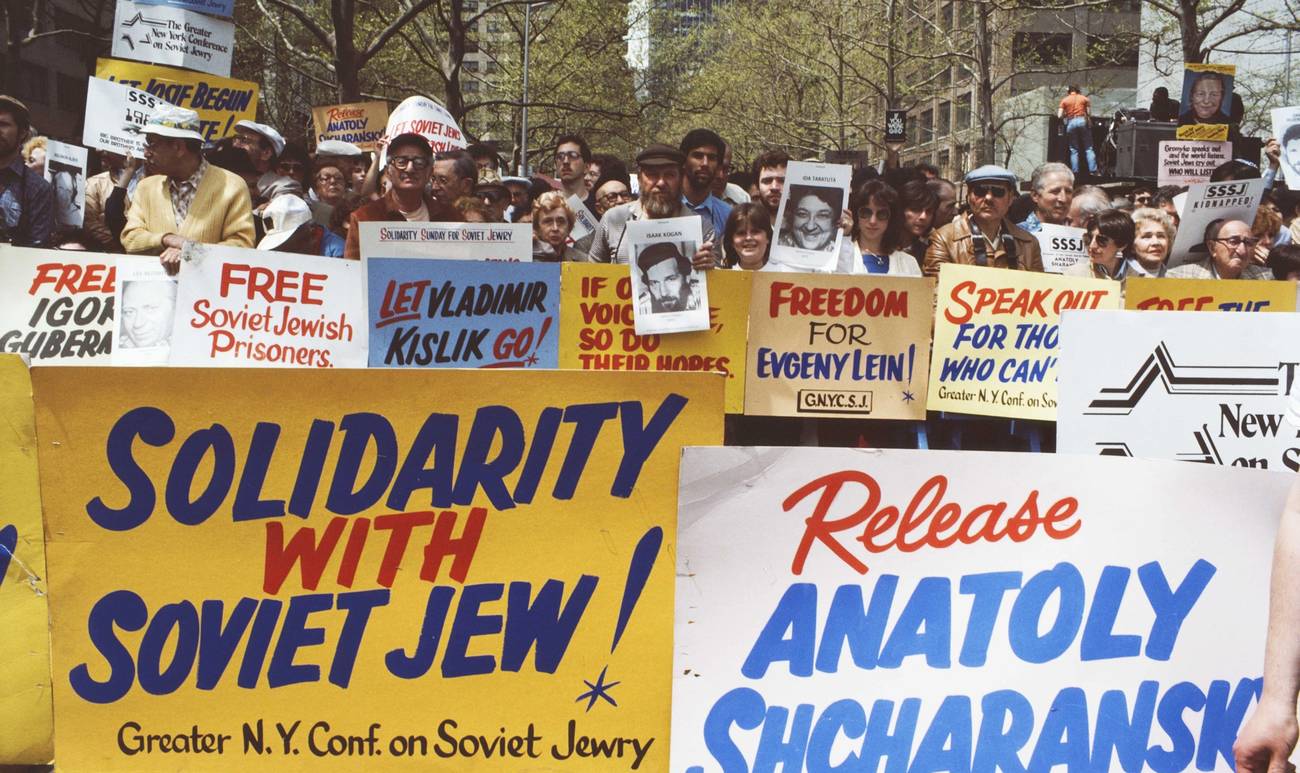The Event That Sparked the Movement to Free Soviet Jewry
Fifty years ago, the Leningrad Trial spurred the American Jewish community to action



It is a date rarely marked, even as it inspired a movement hardly studied, led by heroes barely known.
Fifty years ago, on Dec. 15, 1970, the first Leningrad Trial opened. In it, a group was charged with attempting to hijack a small Soviet commercial plane. Their aim was to reroute it to Sweden from where they would make their way to Israel.
It was an act of desperation. For decades, the Soviet government had discriminated against its Jewish citizens, promoting blatant anti-Semitism, not allowing them to practice as Jews, even as the Soviets blocked their emigration. News of their intolerable suffering was scarcely reported in the West, and when it trickled out, Jews outside the Soviet Union were, in the words of Elie Wiesel, the actual “Jews of Silence.”
Something drastic had to be done. And so, the group felt impelled to take action to wake up the free world. Their message: Twenty-five years after the murder of 6 million Jews as the world looked on, silence could never be tolerated again.
The planned hijacking was not a hijacking in the strict sense of the word. The group had purchased all the seats on the small plane, so that no innocent people would be hurt. Among their group was Mark Dymshits, a former Soviet pilot, who would take the controls and fly the plane out. Indeed, none in the group was armed. It was a bold act of civil disobedience.
On the planned day, the group sensed that authorities had been alerted and were ready to pounce. Still, they went forward, prepared to be arrested in the hope that their dramatic action would inspire a massive movement to free all of Soviet Jewry. As they walked toward the plane, they were beaten and arrested.
The sentences meted out by the Leningrad court were harsh even according to Soviet standards. Dymshits as well as Edward Kuznetzov were sentenced to death. Yosef Mendelevich, the youngest in the group, was given 15 years. Sylva Zalmanson, the only woman involved, was sentenced to 12.
When news of the sentences reached the West, Jews worldwide were incensed. We were then young activists, already involved with the Student Struggle for Soviet Jewry for six years. Under its umbrella, countless demonstrations had been organized.
But this time, almost instinctively, many more people poured into the streets in the tens of thousands in the U.S. and Europe, spontaneously gathering in front of Soviet government buildings, demanding the death sentences be commuted and the other sentences shortened.
Israeli Premier Golda Meir sent a secret emissary to Spain’s dictator Francisco Franco urging him to commute the death sentences of Basque separatists to pressure the Kremlin to do the same with its two doomed Jews.
The Soviets, perhaps embarrassed by the flood of bad publicity—puncturing their veneer as the communist utopian society—blinked, and the lives of Dymshits and Kuznetzov were spared. Several others had their sentences reduced.
The Leningrad Trial, even more than the Six-Day War, forged American Jews into a community that stood up for our brethren wherever they might be suffering. Whereas the Six-Day War inspired pride, the Leningrad Trial inspired action. The Six-Day War laid the groundwork for Jews everywhere to feel a sense of Jewish commitment and identity; the Leningrad Trial translated that commitment into a reality.
The Israeli government, surrounded by the USSR’s client states, had to tread carefully and exerted pressure in the background. Soviet Jewry became primarily a diaspora issue, inspiring American Jews to take the lead.
No doubt, the movement to free Soviet Jewry was one of the greatest achievements of American Jews. It must be remembered, however, that while American Jews played an indispensable role, the true heroes were Soviet Jews themselves. While American Jews went into the streets to express solidarity and demand the freedom of their Soviet Jewish sisters and brothers, Soviet Jews were putting their lives on the line.
Painfully, young Jews today do not know the story of Soviet Jewry; they have little understanding of the role played by those who stood trial in Leningrad just 50 years ago. They do not know their names, or other heroes who emerged after—Natan Sharansky, Ida Nudel, Yosef Begun. They should become the subject of courses that deal with Soviet Jewry that should be offered in our high schools, colleges, and adult education centers.
Over the years, we have been blessed to become close to leading Soviet Jews, including Yosef Mendelevich, who was the heart and soul of the Leningrad plot group. We once asked him, “Even if you had succeeded in taking over the plane, wouldn’t the Kremlin have sent fighter jets to stop you, and, if necessary, shot you out of the sky?” Mendelevich responded that the group had considered this possibility, but were ready to die for the cause.
With the help of God, Mendelevich lived, enduring, with his colleagues, years in the dungeons of the Russian gulag. But his shoulders and the shoulders of countless others became the wings of the plane they never flew out, a much larger plane—as over the next decades, 2 million Jews were freed.
They led the way, they are our heroes.
Glenn Richter was the National Coordinator of the SSSJ from 1964-1991. Avi Weiss, founding rabbi of the Hebrew Institute of Riverdale, served as National Chairman of the SSSJ from 1982-1991. His book Open Up the Iron Door: Memoirs of a Soviet Jewry Activist is dedicated to Richter.